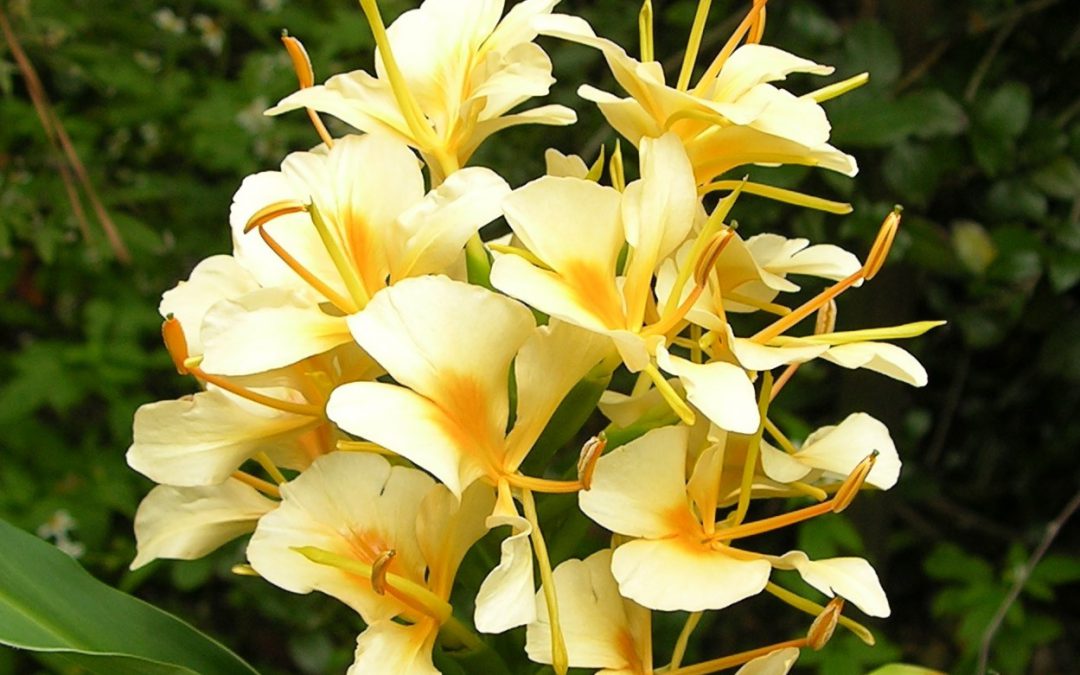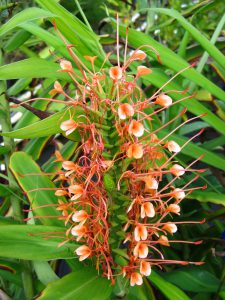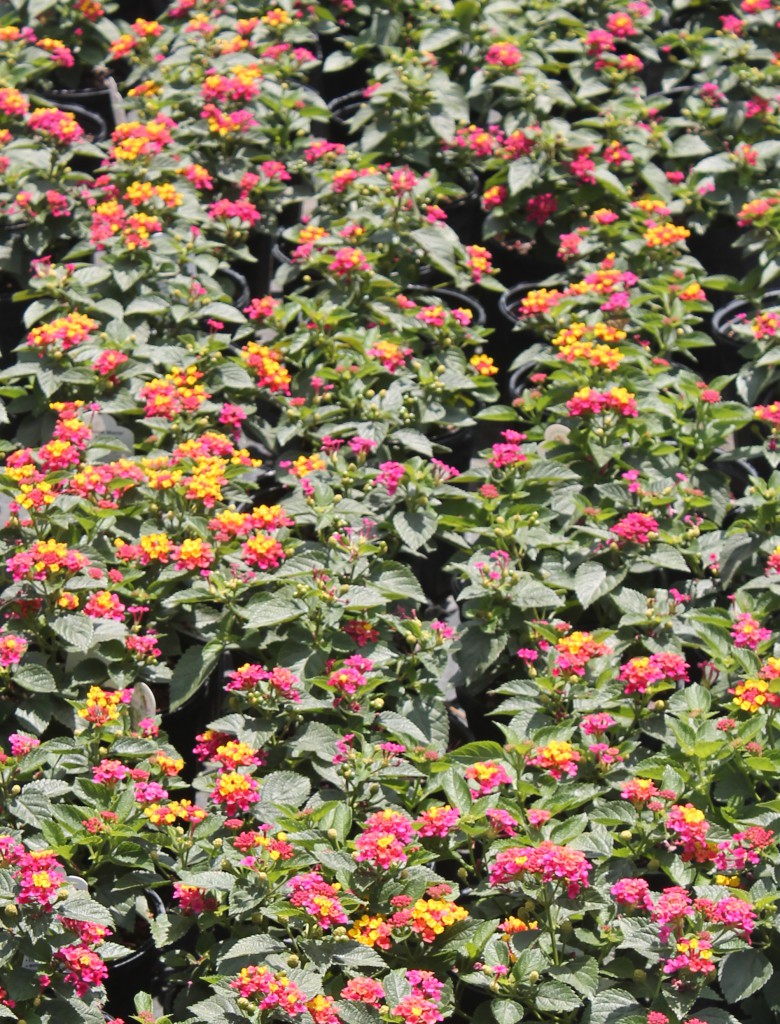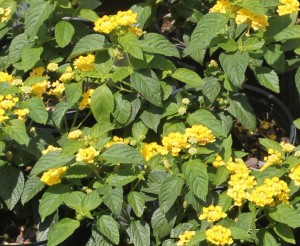
Ginger Lily Adds Fragrance and a Tropical Flair to North Florida Gardens

‘Disney’ scarlet ginger lily produces beautiful orange flower clusters atop stems growing up to 7 feet in height
If you’re looking for colorful flowers with superpowered fragrance, look no farther than ginger lily (Hedychium sp.). This group of plants packs a punch with big, bright flowers, intoxicating fragrance and bold tropical foliage, all in a robust herbaceous perennial that is perfectly hardy in north Florida.
Ginger lilies are tropical and subtropical plants in the Zingiberaceae (Ginger) Family. They produce fragrant, colorful, complex flowers and often other plant parts also are aromatic. Ginger lily flowers appear in racemes or spikes at the tops of cane-like stems 4 to 6 feet or more in height. Flowering summer until frost, the clumps of upright stems grow from thick rhizomes that creep underground just below the soil surface. Native to Asia and related to the spice, true ginger (Zingiber officinale), ginger lilies will add color, fragrance and a tropical vibe to your home garden.
Ginger lilies grow best in full to part sun in rich, moist, well-drained soil. New stems emerge in late spring and quickly grow into upright stems with long, bold-textured leaves held horizontally or angled upright. The cane-like stems are topped with clusters of large, bright colored flowers starting in late spring to mid summer, often continuing through fall. Frosts or freezes will kill the above-ground stems, but rhizomes easily overwinter temperatures as low as 0°F (making them hardy into USDA Cold Hardiness Zone 7b) and produce new growth in late spring once warm weather resumes. Few pests or diseases affect ginger lily, and the only regular maintenance is to cut and remove the dead stems in late winter before new growth emerges.
Butterfly ginger is the type most widely grown and frequently shared as a pass-along plant. Butterfly ginger (Hedychium coronarium) is grown for its large fragrant white flowers. It grows 4 to 5 feet high and begins flowering in mid to late summer, continuing through fall. With a heavy sweet fragrance, a flowering clump of butterfly ginger smells heavenly in the garden and, as a cut flower, will easily perfume a large room! Butterfly ginger is not picky about growing conditions but prefers moist, good garden soil. This is the ginger flower most often used to make Hawaiian leis!
There are dozens of species and cultivars of Hedychium. Some of the ginger lilies that are often found in local nurseries or Master Gardener plant sales are listed below.
‘Dr. Moy’ variegated ginger lily (Hedychium ‘Dr. Moy’) is distinguished by white paint-like splashes on its leaves and fragrant, peachy-orange flowers. ‘Dr. Moy’ produces its first round of flowers from mid-July to August and a second crop in late-September to October.
‘Daniel Weeks’ ginger lily (Hedychium ‘Daniel Weeks’) is a perennial tropical ginger hybrid from Florida’s Russell Adams with hardiness to Zone 7. Growing to 6 to 7 feet high, it produces large dark throated golden-yellow inflorescences with the bonus of delightful evening fragrance. This vigorous clumping hardy ginger lily is the longest blooming, starting in early to mid summer and continuing to frost. It is considered by many as one of the best of all ginger lilies.
‘Disney’ scarlet ginger lily (Hedychium coccineum ‘Disney’) produces large, bright orange flower clusters on tall stems up to 7 feet in height. Foliage is very glossy with a reddish hue, and the overall effect of the clump of stems is very upright. Typically, all stems flower at the same time followed by a resting period before flowering again.
‘Pink Sparks’ ginger lily (Hedychium ‘Pink Sparks’) is a compact variety only growing 4 to 5 feet high. Terminal inflorescences are made up of many small bright pink flowers with very long stamens.
Ginger lily may be propagated by digging and dividing clumps or by cutting off sections of rhizome (making sure each section has at least one bud) and placing these in new locations for sprouting and growth. It’s best to divide or propagate plants before late summer so divisions have enough time to develop a new root system and/or stems before the cooler weather of fall slows growth.
References
Carey, Dennis and Tony Avent. 2010. Hedychium – A Hardy Ginger Plant for the Garden. Plant Delights Nursery, Inc., Raleigh, NC 27603. https://www.plantdelights.com/blogs/articles/ginger-plant-lily-variegated-hedychium-lilies. Accessed 9 June 2021.
Gilman, Edward F. 2015. Hedychium coronarium Butterfly Ginger, FPS-240. Environmental Horticulture Department, UF/IFAS Extension, Gainesville, FL 32611. Original publication date October 1999. Reviewed February 2014. FPS-240/FP240: Hedychium coronarium Butterfly Ginger (ufl.edu). Accessed 9 June 2021.




